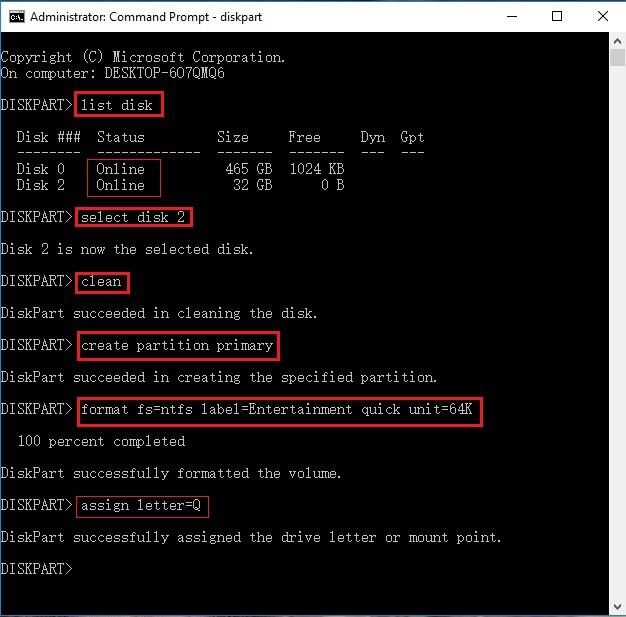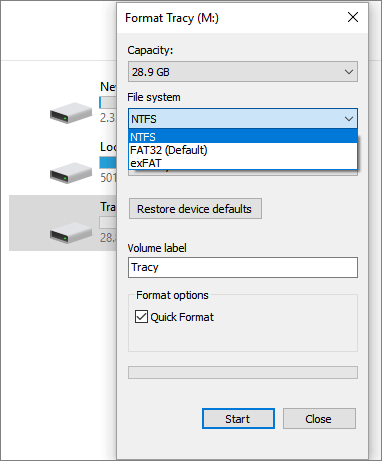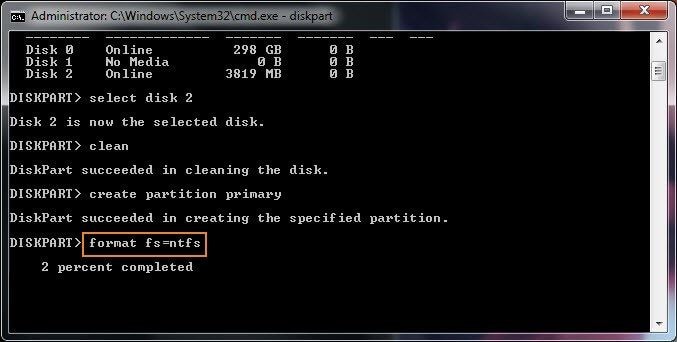
- #Windows format flash drive how to#
- #Windows format flash drive free#
- #Windows format flash drive windows#
If you regret formatting a hard drive but no backup if available.Hence, we recommend transferring the important files you need to a safe location or backing up the USB drive before you format USB to NTFS. Formatting will definitely lead to data loss.
#Windows format flash drive windows#
3 Ways to Format USB to NTFS in Windows 10/8/7īefore you start, keep these 2 points in mind: Can anyone help? Īre you troubled by USB drive formatting? In this post, we show you 3 best ways to format USB to NTFS in Windows 10/8/7. This works fine but I need to format it in NTFS and Windows format says it can't complete the format. See an example below: Q: I recently bought a Kingston 64GB USB flash drive.
#Windows format flash drive how to#
But the case is that some users do not know how to format USB or they are unable to do USB drive formatting.
#Windows format flash drive free#
For example, while copying some large files to a FAT32 USB drive, Windows gives an error message saying the file is too large for the destination file system or flash drive says not enough free space but there is plenty. However, in some cases, there is a necessity to format USB to NTFS. USB flash drives usually come with FAT32 file system.


Select the Use recovery tools that can help fix problems starting Windows option. After a few moments, a System Recovery Options screen should appear.Click Next to proceed through the recovery process. Once the computer has finished booting to the disc, a Recovery Options box should appear.How to boot from a CD or DVD in a computer.In your BIOS setup, configure the boot sequence, so the CD or DVD drive is listed first. If you do not see the message Press any key, the computer's boot sequence is likely not set to boot from the CD or DVD drive first. Using the following format method allows you to erase the primary hard drive on the computer (e.g., the C: drive). If you have a Windows recovery disc or a Windows installation disc, you can access the DOS command prompt and erase a hard drive. See our format command page for further information and other options available with this command.

The more times you format the drive with the count option, the more securely the hard drive is erased. After the first round of zero-fill formatting, the format process fills every sector with a random number between zero and nine. Replace the count text with the number of times you want the hard drive to be formatted.

The command above tells Windows to format the hard drive (in this case, the E: drive) by writing zeroes to every sector. To zero-fill a hard drive, use the following command at the Windows command prompt. Zero filling makes it impossible for someone to recover data from the hard drive that was overwritten. The zero-fill format option is only available in Windows Vista and later.įor a more thorough erasing of data on a storage drive or device, you can zero fill it, overwriting all data on the hard drive with zeroes.


 0 kommentar(er)
0 kommentar(er)
